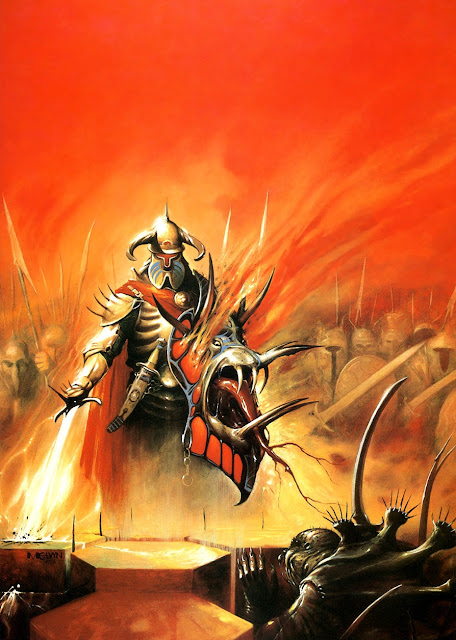At it's core the world of Greyhawk is a set in a post apocalyptic time period. The two great empires of old, the Suloise and Baklunish, waged a war that devastated both empires and reshaped the continents. The story that is told in official publications is that the end of these empires came about due to the "Invoked Devastation," a magical attack so devastating that it's like could never be seen again. The thing is that we're talking about an event that is millennia old within the timeline of the fictional world of Greyhawk and what could pass for magic today might have been advanced technology then.
Imagine for a moment that our world as we know it were to end in a thermonuclear war tomorrow. The very landscape might change depending on how many bombs were used and their power. Everything touched by the radioactive fallout would be changed. Mutations would run rampant on those that survived as their bodies would have to develop new ways to cope with the radiation and the new environment that the world presents them. In the survivors of this nuclear apocalypse we would see new evolutionary developments. As the millennia pass they would slowly crawl their way back into the arms of civilization and as they did so it is inevitable that they would eventually discover ancient technologies. What would they think of our phones, computers, statues, cars, and air planes? Would they know what they were or would they think us wizards who bent the very fabric of reality to our whim?
I think that their reaction would be as Arthur C. Clark once said: "Any sufficiently advanced technology is indistinguishable from magic." They wouldn't have the understanding necessary to distinguish the difference between a gun and a magic wand. Our whole game world could be nothing more than the by-product of a civilization not understanding what they're dealing with. The monstrous creatures they encounter could be mutated animals and human beings or evolutionary excursions as life keeps trying to find new ways to exist. The various races of the planet could be aliens from the far corners of the galaxy who have been trapped here so long that they can't remember being from anywhere else. Demons, devils, and dragons could all be extra-dimensional beings who have made it here through tears in the fabric of space-time leftover from the nuclear devastation. Magic, in all its various forms, could be the expression of a particular mutation within the wider population that is either gaining prominence or being weeded out of the species.
 |
| Art by Moebius |
With this understanding of the world of Greyhawk we could easily imagine it being akin to M. John Harrison's Viriconium, the wildest comics from Heavy Metal, or from the works of Moebius. It could be Jack Vance's Planet of Adventure and Edgar Rice Burroughs' Mars. However you liken the setting, the point is that the world has become far more exciting and wide open again rather than bound by the trappings of a semi-Medieval world and that makes it reinvigorating to my imagination. I hope it does to yours as well.











